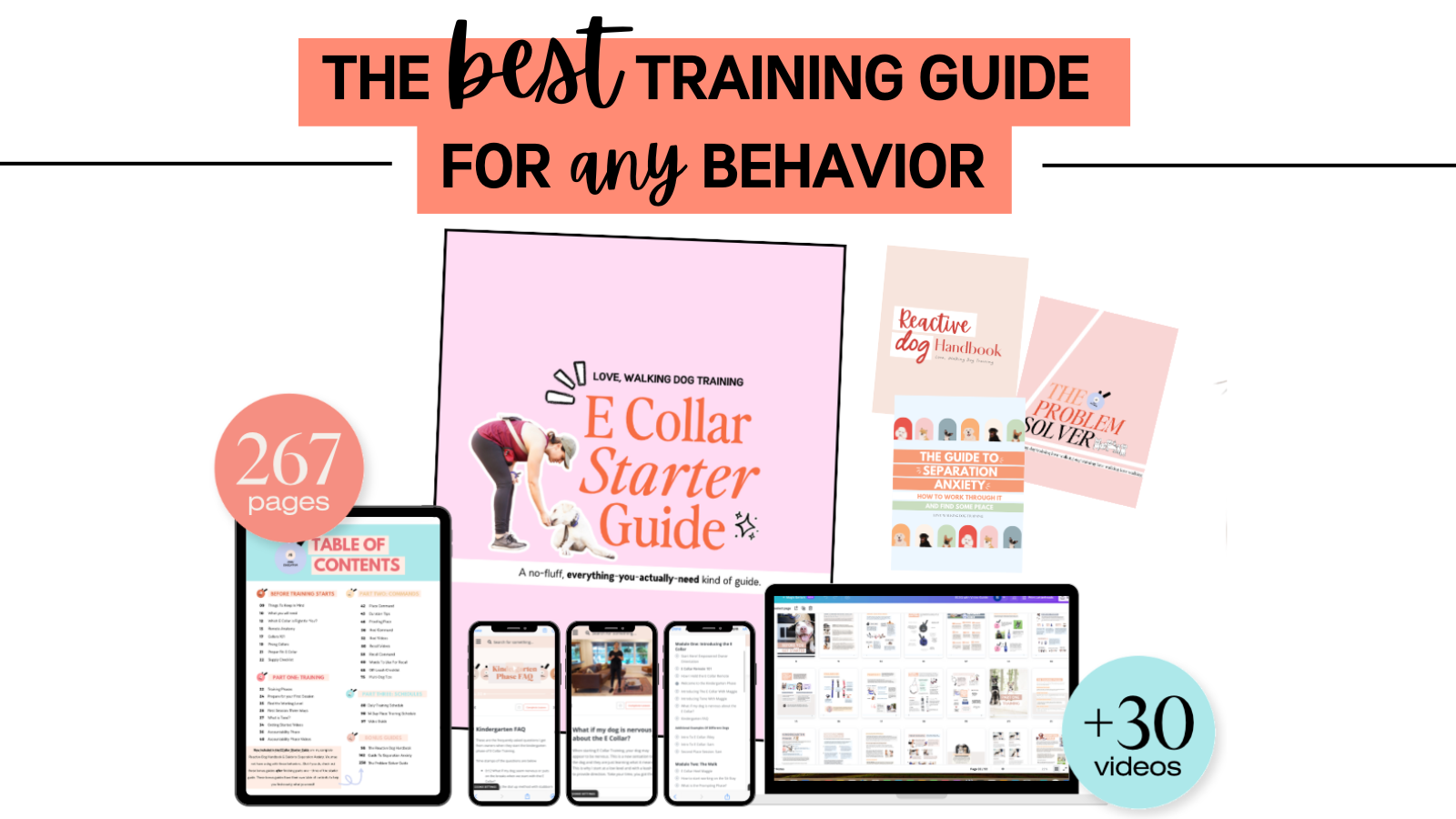Structured Dog Walking (what it is & why it could help with your dog’s reactivity)
If you’ve ever ended a dog walk in tears, feeling like your dog was calling the shots and you were just along for the ride, you’re not alone. Walks should be fulfilling - for both of you. But if your walks are filled with stress, reactivity, or dread, it may be time to rethink how you approach them. Along with having a solid training foundation (I recommend my E-Collar Starter Guide), adding structure into your walk may actually help with having a more enjoyable walk. I call this structured walking.
So, how do you know if a structured walk is necessary for you? And how much structure exactly?
What is a structured walk?
It’s a walk with more boundaries. It can look like the heel command (walking next to you) instead of pulling all over the place. Some dogs can handle more sniffing and engagement on walks, but if you’re struggling with reactivity, fearful stuff, or you just dread going on walks - adding in some structure can make all the difference.
You’ve heard me talk about this a lot… giving your dog a job - instead of free rein - will help keep their mind busy and reduce the likelihood of those problem behaviors. When your dog is pulling ahead of you on the walk and sniffing every inch of grass, your dog is in control. By giving your dog a job on the walk, such as the heel command, you are telling your dog that you are in control and providing them with clear boundaries.
What is an unstructured walk?
Little to no rules. The priorities are sniffing and exploring. Your dog probably walks out in front of you, pulling you to a tree to sniff or pee on it. It’s up to your dog how the walk goes.
There’s nothing wrong with this, unless you are struggling on walks. Dreading them. Left in tears after a reactive outburst (if you know - you know). No rules walks are creating chaos instead of stability. And that’s when a structured walk is oh so helpful.
Do you need to let your dog sniff on walks?
That’s a no for me. Especially if you're struggling with things like reactivity or pushy stuff on the walk. I’d rather you give your dog the “ok” to sniff when you want them to. This leads to a dog that takes more direction from you instead of pulling towards every push and pole whenever they want - talk about pushy.
If you want your dog to sniff more, add in more “breaks” on the walk to sniff (see my 90-10 rule below). But if you are struggling with pushy behavior on the walk and you want to change that, prioritize the job of heel (walking next to you) and let your dog earn those sniffing privileges. The better behaved a dog is on the walk, the more sniffs they get.
Would you rather your dog yank you towards things whenever they want to smell stuff, or look to you for direction about when sniffs are okay? I’ll take the polite stuff all day long, please.
If you’re wondering “But how do I teach my dog how to heel?” I teach you all about this command in the E Collar Starter Guide.
Take a peek at this flowchart to help you decide if you & your dog need some more structure in your lives ❤️
If you ended up with more structure is best, here’s what you can do next.
90-10 Rule: 90% of the time have your dog in HEEL instead of sniffing or doing whatever they want. 10% of the time, give them a break to sniff & pee. If you need help teaching your dog how to heel - check out our free youtube videos. We also have a video on this in our E-Collar Starter Guide video series.
Be consistent with your new boundaries on the walk. Dogs learn best when things are very clear- making your dog heel only sometimes is not helpful & will be confusing to them. Stick to the new routine.
Start to use the word “break” any time you want your dog to have some time to go potty or sniff. Worried your dog has to go potty? Say “break” and let them go. This helps your dog look to your for guidance instead of calling the shots - which leads to more pushy behavior.
For how long will you need to do this on walks?
This all depends on you and your dog. Start to pay attention to how walks feel for you. Is your dog being less pushy? Walking nicely next to you? Reacting less to dogs or whatever their trigger is? Then you can loosen up a bit with the rules and see how your dog does.
Or your might start to love more structure on the walk because your dog is at their best when they have a job (heel) to focus on. So, stick with it! You don’t have to ever phase out of it if it’s working for you! You can always come back to more structure if you need a reset if your dog starts pushing boundaries (and they will). You’ll always have structure to rely on.
At the end of the day, walks shouldn’t feel like a battle. They should be a chance to move and enjoy time together. If you’ve been struggling, adding structure could be the game-changer you didn’t know you needed. It’s not about being strict & you’re not being mean by making your dog heel - it’s about creating clarity and boundaries between you and your dog.
If you’re ready to make walks more enjoyable, start by giving your dog a clear job like heel—and if you need help teaching that, grab my E-Collar Starter Guide. It walks you through exactly how to build structure on your walks in a way that works for real life. You’ve got this.
-Love, Bethany



